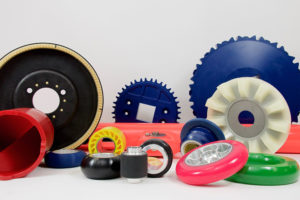 Some of the best companies often find that bonding polyurethane over metal is hard and it can be even harder to find trusted suppliers who are consistently successful in bonding polyurethane over metal.
Some of the best companies often find that bonding polyurethane over metal is hard and it can be even harder to find trusted suppliers who are consistently successful in bonding polyurethane over metal.
What is the mode of failure in the industry our competition keeps stumbling on when dealing with bonding polyurethane over metal?
A simple answer could be they are not following their own processes. Or is it that they aren’t aware of the basic procedures of polyurethane bonding at all?
Does your OEM custom polyurethane manufacturer have the proper equipment for bonding polyurethane? Do they have contamination happening at any point of the polyurethane over metal bonding operation?
Here are the basic questions that should be addressed for polyurethane over metal bonding :
 What is the surface finish of the base material?
What is the surface finish of the base material?- How is the insert being washed?
- How is the insert being handled?
- What is the age and mixture of the chemical bonding agent?
- What is the thickness of the bonding agent when applied?
- What is the formulation of the polyurethane?
- What is the temperature?
- What is the time allocated?
It is important to have written procedures for all of these steps.
At Gallagher, this is second nature. We are experts in polyurethane over metal bonding — we have the right equipment, and we do extensive testing on different materials and bonding agents, and we have the experience to make it all work. We have solved the age-old challenges of polyurethane bonding injection molded TPUs to metals and we do this as well as we do on our thermoset materials
 We make new test molds and we make a qualified sample run. The customer then has the opportunity to run the parts through their extensive testing and ensure that what we have met our promise.
We make new test molds and we make a qualified sample run. The customer then has the opportunity to run the parts through their extensive testing and ensure that what we have met our promise.
Is this a lot of work to gain our customer’s trust? “Yes” — but they become our customers for life.
If your supplier isn’t following best practices when it comes to bonding polyurethane and doesn’t have a guarantee, we should have a conversation. Contact us.

 What is the surface finish of the base material?
What is the surface finish of the base material?